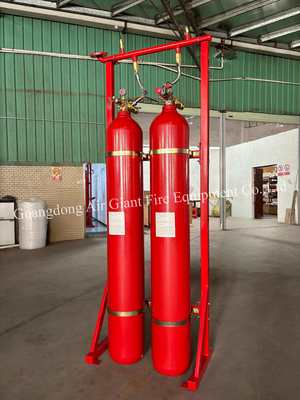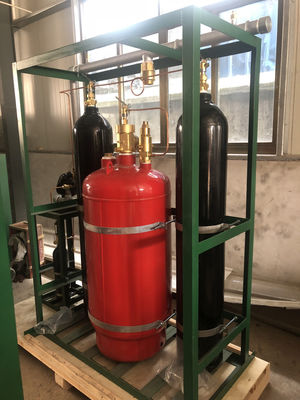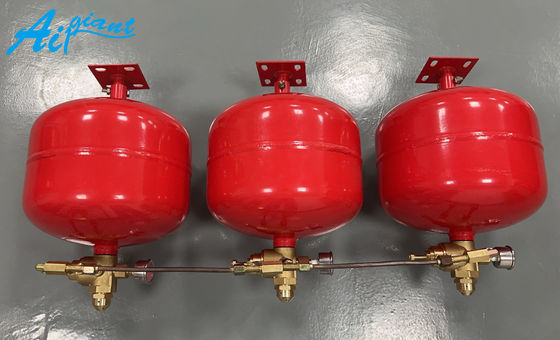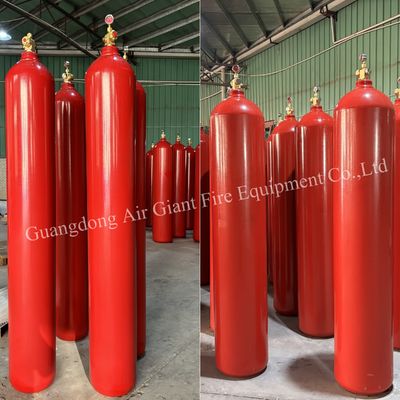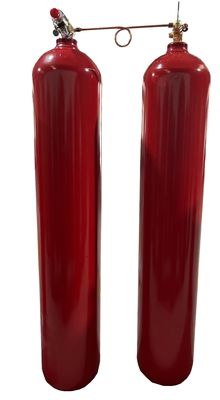The Silent Guardian: An In-Depth Analysis of Gas Fire Suppression Systems
When a fire breaks out in a room housing sensitive servers, a precious archives repository, or a power control room filled with expensive equipment, water is not an ideal extinguishing agent. The "secondary damage" caused by water can be more devastating than the fire itself. This is when a highly efficient, clean, and residue-free fire suppression system—the gas fire suppression system—comes into play.

I. What is Gas Fire Suppression?
Gas fire suppression, as the name suggests, uses specific gases or gaseous mixtures as the extinguishing medium. Its core mechanisms involve rapidly reducing oxygen concentration, cooling the combustion zone, or interrupting the chain reaction of combustion to suffocate a fire quickly. Compared to traditional water-based systems, its greatest advantage is being "clean"—it leaves no residue after extinguishment, preventing damage to electronic equipment, documents, artifacts, and other valuable assets.
II. Primary Extinguishing Mechanisms
1. Oxygen Dilution (Suffocation): By flooding the protected area with large volumes of inert gas, it rapidly reduces the oxygen concentration below the level required to sustain combustion (typically below 15%), causing the flames to be "suffocated."
2. Chemical Inhibition (Chain Breaking): Certain chemical gaseous agents decompose at high temperatures and react with free radicals (e.g., H•, OH•) produced in the combustion reaction. This interrupts the combustion chain reaction, extinguishing the fire rapidly. This is the primary mechanism for Halons and their replacements.
3. Cooling: Some gases undergo phase change and absorb heat upon discharge, or use their heat capacity to draw significant energy from the fire zone, thereby reducing its temperature.
III. Main Types of Gas Suppressants
The development of gaseous agents has evolved from "efficient but environmentally damaging" to "environmentally friendly and applicable."
1. Inert Gases
Representatives: IG-541 (52% Nitrogen, 40% Argon, 8% CO2), IG-100 (100% Nitrogen), IG-55 (50% Argon, 50% Nitrogen)
Mechanism: Primarily extinguishes fire by physically diluting oxygen (suffocation). The small amount of CO2 in some blends can also stimulate human respiration, making the system relatively safe for occupants.
Advantages: Green, environmentally friendly, colorless, odorless, readily available, and relatively safe for people.
Disadvantages: Requires numerous storage cylinders and large-diameter piping because a sufficient volume of gas must be released to reduce oxygen to the critical level. This requires more space.
2. Fluorinated Ketones (FK-5-1-12, Tradename Novec 1230)
Mechanism: Extinguishes fire primarily through powerful heat absorption (cooling), with a minor chemical inhibition component.
Advantages:
-- Environmental Star: Zero Ozone Depletion Potential (ODP), very low Global Warming Potential (GWP=1), and a short atmospheric lifetime (5 days).
-- Safety: Its NOAEL (No Observed Adverse Effect Level) is much higher than its design concentration, making it very safe for personnel.
-- Efficiency: Requires a small amount of agent, needing far fewer cylinders than inert gas systems.
Disadvantage: Higher cost.
3. Hydrofluorocarbons (HFCs)
Representatives: HFC-227ea (Heptafluoropropane), HFC-125, HFC-23
Mechanism: Primarily extinguishes fire through chemical inhibition, offering very high efficiency.
Advantages: High extinguishing efficiency, low design concentration, relatively compact cylinder requirements and piping. Technologically mature and widely used.
Disadvantages: High GWP values (e.g., HFC-227ea has a GWP of 3500). They are controlled greenhouse gases under the Kigali Amendment and will face gradual phase-down.
4. Carbon Dioxide (CO2)
Mechanism: Dual action of high-concentration suffocation and cooling.
Advantages: Excellent extinguishing performance, low cost.
Critical Disadvantage: Its design concentration far exceeds the lethal level for humans. Therefore, it is typically only used in unoccupied spaces or as local application systems. Strict audio-visual alarms and discharge delays are mandatory before release to ensure personnel evacuation.
(Phased Out) Halons
Due to their severe ozone-depleting potential (high ODP), Halon 1301 and 1211 were banned from production globally starting in 1994 (except for certain essential uses). The search for and promotion of Halon alternatives has been a central task in the gas fire suppression field for decades.
IV. Domestic and International Standards & Codes
International:
lISO 14520 and NFPA 2001 are the most authoritative international standards for clean agent fire extinguishing systems, widely adopted globally. They provide detailed guidance on system design, installation, acceptance, and maintenance.
China:
lGB 50370 "Code for Design of Gas Fire Extinguishing Systems": This is the fundamental standard for gas system design in China, detailing design parameters, applications, and safety requirements for systems like HFC-227ea, IG-541, and others.
lGB 50193 "Code for Design of Carbon Dioxide Fire Extinguishing Systems": Specifically for CO2 systems.
lThese national standards incorporate international experience while fully considering domestic engineering practices and fire safety requirements.
V. Core Application Areas
Gas fire suppression systems are the "standard solution" for the following critical locations:
1. Electronic Information Rooms: Data centers, server rooms, network switch rooms.
2. Important Archives & Cultural Sites: Libraries, archives, museums.
3. Power & Control Centers: Electrical substations, distribution rooms, industrial control centers.
4. Valuable Industrial Equipment: e.g., CNC machines, painting production lines.
5. Offshore Platforms & Vessels: Engine rooms, control rooms.
VI. Trends and Challenges
1. Environmental Sustainability: With growing global emphasis on climate change, low-GWP agents (like Novec 1230, IG-541) will become the absolute mainstream, while HFCs with high GWP will be gradually restricted and replaced.
2. Intelligence & Integration: Systems are increasingly integrated with the Internet of Things (IoT) and big data platforms, enabling remote monitoring, intelligent diagnostics, predictive maintenance, and interoperability with other fire safety/security systems.
3. Precision Design: Using Computational Fluid Dynamics (CFD) to simulate fire scenarios and gas dispersion allows for more precise nozzle placement and concentration assurance, improving efficiency and reducing costs.
4. New Agent Development: Research institutions and companies continue to develop new extinguishing agents that are more environmentally friendly, safer, and more economical.

Conclusion
Gas fire suppression systems are an indispensable part of the modern fire protection framework, acting as "precision instruments" for protecting critical infrastructure and cultural heritage. From the early Halons to today's green clean agents, their history of development is a story of human progress in seeking a balance between safety and environmental protection. Understanding and correctly selecting gas fire suppression systems is crucial for building a safer and more sustainable future.

 आपका संदेश 20-3,000 अक्षरों के बीच होना चाहिए!
आपका संदेश 20-3,000 अक्षरों के बीच होना चाहिए! कृपया अपनी ईमेल देखें!
कृपया अपनी ईमेल देखें!  आपका संदेश 20-3,000 अक्षरों के बीच होना चाहिए!
आपका संदेश 20-3,000 अक्षरों के बीच होना चाहिए! कृपया अपनी ईमेल देखें!
कृपया अपनी ईमेल देखें! 


